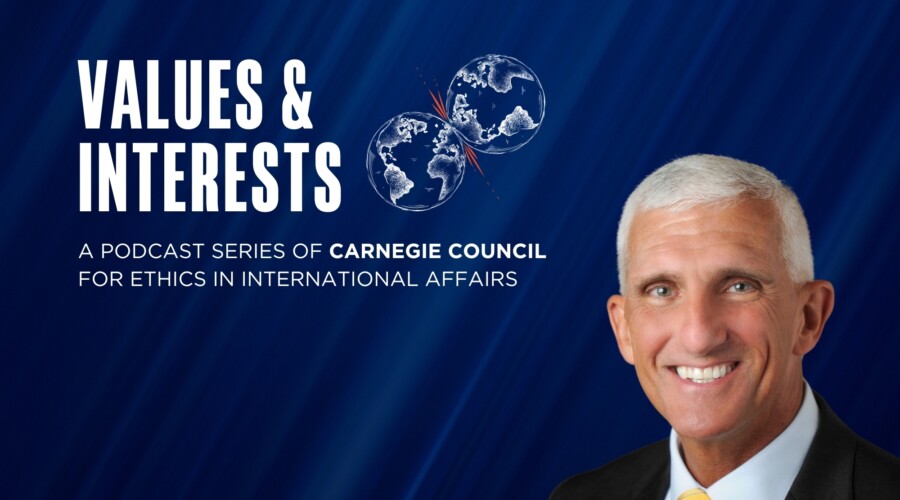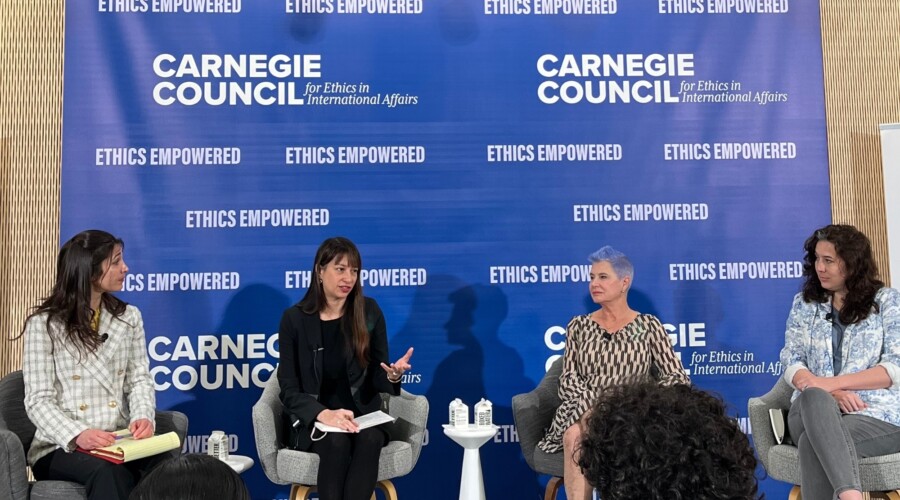The realization that emissions are responsible for an impending climate crisis has set in motion a major change in human history—the evolution to a carbon-free economy. Few people realize the extent to which this will alter everything that currently makes up our daily lives. Having been born into a world dominated by fossil fuels, we lack a reference for this transformation, but we are starting to acknowledge that it must happen if we are to preserve the earth for future generations.
One of the challenges ahead is the development of tools to better measure the true environmental value of greenhouse gas (GHG) abatement programs, and the use of these tools to determine the relative impact of our options for carbon reduction versus carbon sequestration. We need to improve our ability to identify and invest in projects that will give the best environmental returns for our limited resources.
A Different Carbon Value
Dave Douglas, vice president of Eco Responsibility at Sun Microsystems, suggests using a carbon Net Present Value (NPV) to better understand the relative environmental benefits of different offset programs. Whereas a standard NPV defines the economic value of the life of a program, a carbon NPV—or better yet an environmental NPV (eNPV)—would yield the environmental benefits of a program's emission reductions over time.
The discount factor for the time value of carbon could be based on the timelines for emissions reductions put forth by the Intergovernmental Panel on Climate Change and the Stern Review. Both sources highlight the need to scale back emissions in the next 30 to 40 years if we are to avoid long-term and potentially irreversible damage to the earth and its inhabitants. Abatement of a ton of GHG before 2050 is clearly worth more than a post-2050 ton. An eNPV would account for this difference when evaluating the relative merits of competing projects.
Furthermore, an eNPV can be taken in conjunction with a traditional NPV to provide a more comprehensive view. Compounding environmental and financial metrics would create derivatives that better account for the time sensitivity of carbon reduction. This could serve as the basis for more sophisticated modeling techniques that factor in the forecasted GDP impact of not averting the crisis. These figures can be significant—the Stern report estimates failure to act could result in a loss of as much as 20 percent of global GDP.
Carbon Reduction vs. Sequestration
Two other factors that come into play with an eNPV analysis are the rate of carbon reduction or sequestration, and the life of each program. These factors are important when comparing renewable energy, afforestation, and carbon storage initiatives.
Once a clean-energy project is brought online, it immediately delivers carbon reductions at an approximate rate of 1 metric ton (megaton) of carbon dioxide equivalent (CO2e) per MWh, using coal-fired plants as a basis. In contrast, the annual sequestration rate of trees during the first 15 years of growth ranges between 1.5 to 2.0 metric tons per acre in the Southeast, and between 0.6 to 1.5 metric tons per acre in the Northern and Pacific coast areas.
When applied at a national or international scale, afforestation models quickly show their limitations in reducing atmospheric GHG concentrations to acceptable levels. For example, achieving an emission reduction equivalent to that provided by America's wind energy in 2006 (25 megatons of CO2e) would require planting trees on approximately 17 million acres of currently unforested land. That's a little more than twice the size of the entire State of Connecticut. If the program were to sequester all U.S. coal emissions in 2006 (2.1 gigatons of CO2e), it would require conversion of a previously unforested land mass two-thirds the size of the United States. Likewise, a program to sequester global emissions would require the conversion of more than 5,000 times the world's total agricultural land to new forests.
So while trees pass the "granny test," in that even your grandmother understands the benefits of planting trees, afforestation fails to balance even current energy demands, let alone the growing demands of a rapidly expanding world population.
Granted, investments in carbon-free energy or efficiency technologies have a shorter life span than forests. While a solar photovoltaic system has an asset life of 25 years, trees continue to sequester carbon for more than 100 years. And the London School of Economics estimates that the maximum financial benefit of carbon sequestration in timber value is achieved after 150 years. But given our immediate need for emission reductions, the value of a forest's extended sequestration life is quickly discounted through an eNPV.
Carbon Capture & Storage (CCS) technology is being promoted as a means to keep coal in the future energy portfolio, though many questions remain about the long-term stability and safety of massive underground CO2 reservoirs. With renewables offering vast amounts of zero-carbon energy from an effectively inexhaustible supply, the use of technologies to extend the life of an unsustainable resource such as coal seems counterproductive.
If CCS were available today, it would be a useful stopgap as we transition via a low-carbon economy, but the technology is a good 10 to 20 years away and yet unproven. The Department of Energy's recent scuttling of the much-touted "new clean coal power plant" FutureGen (after its costs more than doubled to $1.8 billion) underscores the complexity, costs, and risks of CCS. If the goal is to avert the impending climate crisis, diverting resources to help extend the life of coal seems shortsighted in light of the sustainable nature of renewable energy.
Opportunities for New Leadership
While climate change may well represent the biggest challenge to mankind in recent history, it clearly represents the biggest new market opportunity in world history. For the United States, it provides an unprecedented opportunity to galvanize American innovation to become the center of a new global carbon-free economy. In rising to the challenge, America can level the playing field of today's geopolitically driven energy market by using its strongest resource—innovation and technological know-how.
In a carbon-free economy where energy is available to all who know how to harness it, the presence or absence of fossil fuels within a nation's borders would no longer determine a country's wealth or power. America has the opportunity to free itself from dependence on foreign oil, improve international security, and create an economic engine that will ultimately dwarf the current fossil fuel economy.
It seems America has everything in place to make this happen, except political will and leadership. Part of the Bush legacy will be failure to ratify the Kyoto Protocol, making America a lone holdout after the first act of Australia's new leadership was to ratify the agreement. Added to that legacy is responsibility for stripping all key renewable energy provisions from the Energy Bill passed into law late December 2007.
Amid the well-publicized fanfare for an increase in Corporate Average Fuel Economy (CAFE) automotive efficiency standards, the promotion of renewable energy was silently dropped from the bill at the eleventh hour to avert a presidential veto. Gone is the shift of subsidies from the mature oil and coal industries to renewable energy development. Gone is a national renewable energy standard requiring 15 percent of electricity from renewable sources. Gone is the extension of the federal investment tax credit for solar energy and the production tax credit for wind energy.
While the Senate Finance Committee attached renewable energy tax credits to the Stimulus Bill at the start of February, it was blocked five days later by Republican leadership, citing among other items their objection to "tax breaks for renewable energy producers."
Some take a Machiavellian position that the political establishment in America, having risen to power on the back of fossil fuels, will continue to resist the transition to a carbon-free economy. Hopefully this is not the case. The Presidential Climate Action Project has assembled a comprehensive action plan to put America on a leadership path regarding climate change within the next president's first 100 days in office. The world will be looking for signs of decisive leadership on climate change and zero-carbon energy.
Keeping Our Eye on the Goal
From an emissions perspective, renewable energy and power efficiency programs provide a much bigger bang for the buck than afforestation or CCS options, especially if we take into account the eNPV and the accelerated time frame in which we need tangible results. In this light, we should endeavor to engage government and the private sector to rapidly deploy solutions.
If averting the crisis were only about reducing emissions, my vote would be in favor of renewables and efficiency, and to forget sequestration altogether—especially CCS, which comes with fears similar in many ways to those that surround nuclear waste disposal.
But reducing emissions is only part of the equation. The crisis is about the preservation of the world for future generations and establishing a sustainable relationship with the earth. It calls for a holistic approach that takes into account the earth as an interrelated system rather than as separate parts merely to be bought and sold.
Trees and forests play an important role in the earth's carbon cycle, but they also contribute to other essential needs such as health, habitat, water management, food, and soil stability. That is why trees pass the "granny test." Not because your grandmother has done the math on the carbon offsets she bought when flying to visit you over the holidays, but because people inherently understand the benefits of forests as a whole. So as we forge ahead with renewable energy and efficiency programs in our pursuit of a carbon-free economy, we cannot afford to lose sight of the trees and the values they symbolize.
![]() This article is licensed under a Creative Commons License.
This article is licensed under a Creative Commons License.
Please read our usage policy.




